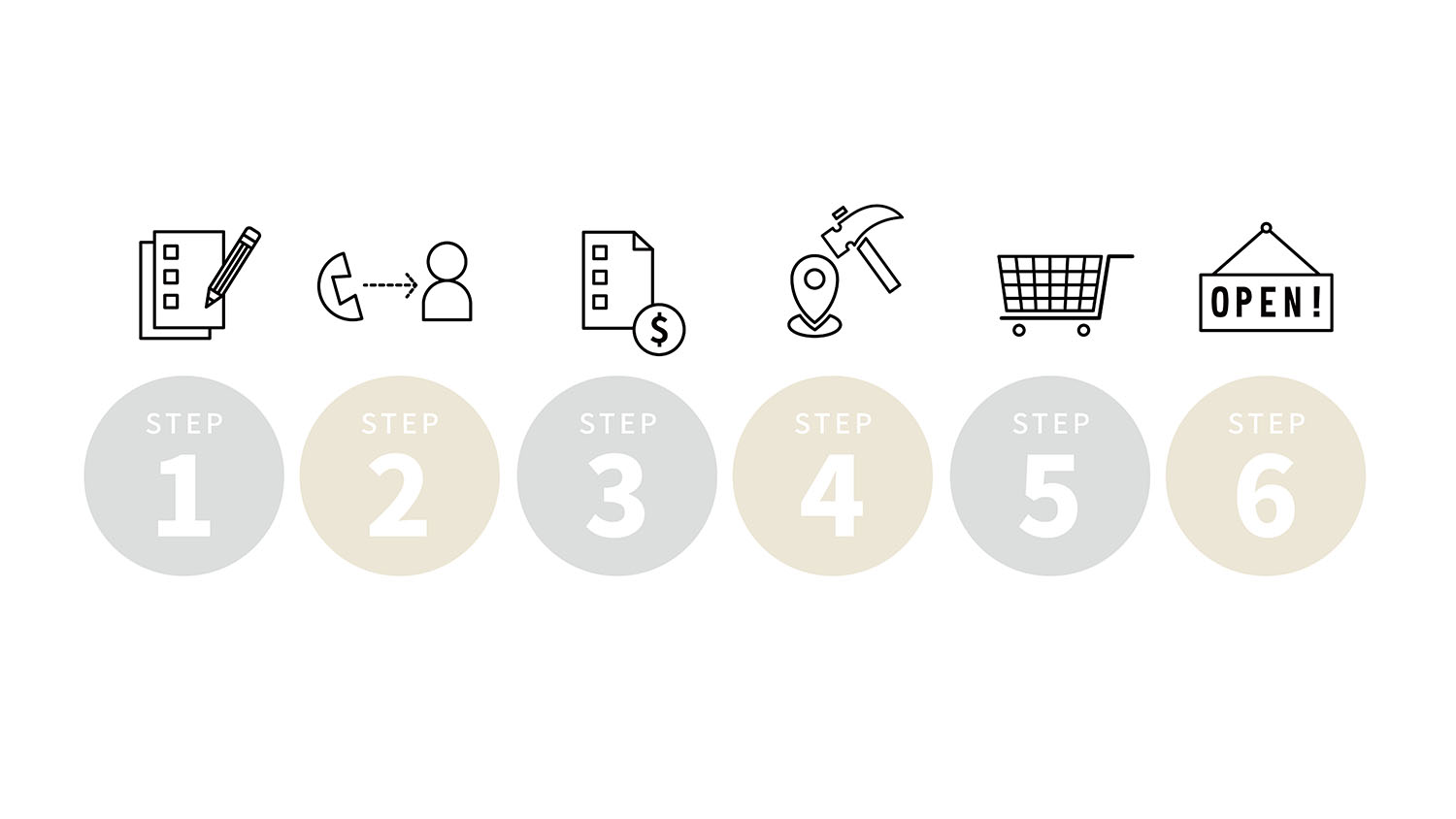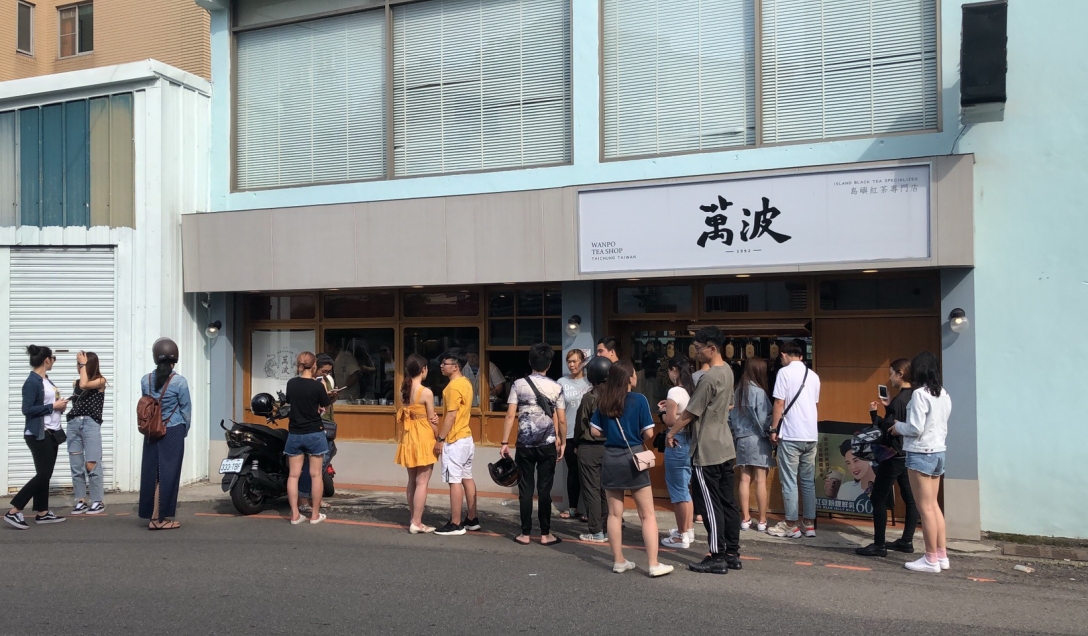Analyzing the Profitability of Bubble Tea Shops
Gone are the days of bubble tea being just a trendy drink. Here at Wanpo, we're witnessing its transformation into a global phenomenon! The sheer popularity speaks for itself: in Taiwan alone, over 1.5 billion cups are consumed annually, and the market is projected to reach a staggering $4.78 billion by 2032.
But the real question is: can this be a profitable business venture for you? Absolutely! Stick around as we delve into the reasons why a well-run boba shop can be a recipe for success.
The Boba Craze: A Recipe for Success?
The boba craze isn't just about drinks and pearls – this vibrant trend offers a lucrative opportunity for aspiring entrepreneurs like you. At Wanpo, we've been following the boba boom closely, and we're here to spill the tea (pun intended) on what makes a successful boba shop.
-
Riding the Demand Wave: Bubble tea isn't just a fad, it's a beloved drink for all ages. This growing demand creates a prime opportunity for new boba shops.
-
Endless Customization: From classic flavors to unique concoctions, boba shops cater to a wide range of tastes. This variety attracts a diverse customer base and keeps things exciting.
-
The Power of Choice: Boba is an interactive experience. With options for sweetness, toppings, and flavors, customers become their own boba mixologists. This fun factor translates to repeat business as they return to experiment with new combinations.
-
Low Investment, High Profit: The good news? Boba ingredients are inexpensive! This allows shops to offer competitive prices while maintaining healthy profit margins. Plus, you can find the best quality for the best price.
-
Premium Prices, Sweet Rewards: Bubble tea often commands a premium price. But with low-cost ingredients, this translates to high profit margins for shop owners. Even a moderate customer base can bring significant profits.
-
A Trend with Staying Power: Bubble tea isn't a flash in the pan, it has a loyal following, especially among younger demographics. Capitalize on this trend to build a dedicated customer base and a thriving boba destination.
Financial Analysis of a Boba Tea Shop

The allure of boba tea is undeniable, but can this trendy beverage translate its popularity into profit? This financial analysis of a boba tea shop will dissect its income and expenses to reveal the factors that contribute to a shop's success.
Disclaimer: The following analysis provides estimates and averages. Actual boba tea shop profitability will vary depending on factors such as location, shop size, menu offerings, and operational efficiency.
Pricing:
Prices can vary depending on the size of the drink (regular or large) and any additional toppings you choose.
Customer Spending:
On average, customers spend between $5 and $10 per visit. This translates to an estimated monthly spending range of $10 to $40 per customer.
Price Variation:
As mentioned earlier, boba tea prices can vary based on size and additional toppings. Regularly assess your pricing strategy to ensure you're covering your costs and generating a healthy profit margin.
Cost Breakdown per Cup:
The cost of a single boba can be broken down into fixed and variable costs:
-
Fixed Costs: These are costs that don't change with the number of bobas sold, such as:
-
Custom Logo Cup: $0.04/16oz
-
Seal: $0.01/cup
-
Plastic Straw: $0.01/cup (or Paper Straw: $0.04/cup)
-
-
Variable Costs: These costs vary depending on the ingredients used and can include:
-
Tea leaves
-
Milk
-
Flavoring powders or syrups
-
Tapioca pearls
-
Toppings (fruits, jellies, etc.)
-
Bubble Tea Cost of Production (16oz cup):
Here's an example of the estimated cost for a 16oz taro bubble milk tea, keeping in mind that actual costs may vary:
-
50g Bubble Tea Powder: $0.42 (Powder priced at $8.50/KG)
-
75g Tapioca Pearls: $0.14 (Based on $3)
Revenue Streams:
-
Boba Tea Sales:
-
Regular Milk Tea/Fruit Tea: $3 - $4 (Regular), $5 - $6 (Large)
-
Specialty Drinks: $4 - $6 (Regular), $6 - $7 (Large)
-
Toppings: $0.50 - $1 each
-
Combo Deals: $6 - $9
-
Customer Spending:
-
Average Customer Spending per Visit: $5 - $10
Operational Costs:
-
Employee Salaries:
-
Barista/Staff Wages per Hour: $12 - $20
-
Monthly Payroll: This will depend on the number of employees, hours worked, and specific wage rates.
-
Let's assume a small shop with 2-3 employees working an average of 40 hours per week at $15/hour. This translates to a monthly payroll range of $3,600 - $5,400.
-
Rent or Lease:
-
Range: $1,500 - $5,000 per month. The actual cost will depend on location, shop size, and negotiation.
-
-
Ongoing Operational Costs
Profit Calculation:
Monthly Income - Total Monthly Costs (including taxes) = Net Income
Example:
Let's assume you project 100 customers per day with an average spending of $7.50. This translates to an estimated monthly revenue of $22,500. Here's a sample calculation based on the cost ranges provided:
-
Monthly Revenue: $22,500
-
Monthly Payroll: $4,500 (using the middle of the range)
-
Rent: $3,000 (using the middle of the range)
-
Utilities: $500 (using the middle of the range)
-
Inventory: $1,750 (using the middle of the range)
-
Marketing: $650 (using the middle of the range)
-
Other Operational Costs: $700 (average of remaining costs)
Total Monthly Costs: $11,100
Estimated Net Income: $22,500 - $11,100 = $11,400
Important Note: This is a simplified example with estimated costs. Your actual net income will vary depending on your specific circumstances, location, sales volume, operational efficiency, and taxes, of course.
Determining Profitability in a Boba Tea Shop
Here's a breakdown of key concepts to understand profitability in a boba tea shop:
Break-Even Point Analysis:
This analysis helps you determine the minimum sales volume needed to cover all your expenses (fixed and variable) and break even (no profit, no loss).
-
Fixed Costs: These are expenses that don't change with sales volume, such as rent, insurance, utilities.
-
Variable Costs: These expenses vary with sales volume, such as ingredients, packaging, employee wages per hour worked.
Break-Even Point Calculation:
Break-Even Point (Units) = Total Fixed Costs / (Price per Unit - Variable Cost per Unit)
Example:
-
Monthly Rent: $3,000 (Fixed Cost)
-
Price per Boba Tea: $4.00
-
Variable Cost per Boba Tea: $1.50
-
Break-Even Point = $3,000 / ($4.00 - $1.50) = 1,000 cups/month
This means you need to sell at least 1,000 cups per month to cover all your expenses and make no profit.
Profit Margins:
This is a profitability metric that shows the percentage of revenue remaining after accounting for all costs (variable and fixed).
-
Profit Margin = (Revenue - Total Costs) / Revenue x 100%
Boba Tea Industry Profit Margins:
The boba tea industry boasts relatively high-profit margins compared to other food and beverage businesses. Again, here's why:
-
Low Ingredient Costs: Bubble tea ingredients like tea leaves, tapioca pearls, and syrups are generally inexpensive.
-
Premium Pricing: Bubble tea is often marketed as a premium beverage, allowing for higher selling prices.
Profit Margin Range:
The typical profit margin for a boba tea shop can range from 10% to 30%, with an average around 20-25%. Several factors influence this range:
-
Location: High-traffic areas with low competition can lead to higher margins.
-
Pricing Strategy: Premium pricing can increase margins, but may limit customers.
-
Cost of Goods Sold (COGS): Efficient management of ingredient and operational costs improves margins.
-
Operational Efficiency: Streamlined processes and employee training minimize costs and boost profitability.
By understanding break-even points, profit margins, and these key factors, you can make informed decisions to maximize profitability for your boba tea shop.
Strategies for Maximizing Profit
The allure of boba tea is undeniable, but translating that into a thriving business requires strategic planning. Here's an exploration of key factors influencing profitability in your boba tea shop:
1. Initial Startup Costs:
-
Planning is Key: Carefully plan your setup costs, including equipment, supplies, permits, renovation, and initial inventory.
-
Negotiate Favourable Deals: Secure good deals on equipment rentals or purchases and negotiate favorable terms with vendors.
-
Consider a Phased Approach: Start with a core menu and equipment, then expand offerings based on customer demand and success.
2. Importance of Shop Location:
-
High Visibility: Choose a location with good foot traffic in a vibrant commercial area or near schools/offices.
-
Accessibility and Convenience: Consider parking availability and pedestrian traffic patterns.
-
Competition Analysis: Research existing boba shops in the vicinity and analyze their offerings to find a niche for your business.
3. Know Your Target Customer:
-
Demographics and Preferences: Identify your ideal customer's age, income level, and boba tea preferences (fruity, creamy, etc.).
-
Tailored Marketing: Develop marketing strategies targeted specifically to your ideal customer segment.
4. Effective Advertising and Marketing Strategies:
-
Harnessing Social Media: Utilize platforms like Instagram and TikTok to showcase your unique drinks and connect with young customers.
-
Promotional Offers: Offer discounts, combos, and loyalty programs to incentivize new customers and foster repeat business.
-
Eye-catching Visuals: Invest in high-quality photos and videos of your boba tea to grab attention online and in-store.
5. Management of Ingredients and Inventory:
-
Minimizing Waste: Implement inventory management systems to track ingredients and prevent overstocking and spoilage.
-
Negotiate Bulk Purchases: Negotiate bulk purchase discounts with suppliers for high-volume ingredients.
-
Prioritize Freshness: Maintain a consistent supply of fresh ingredients to ensure the highest quality drinks.
6. Ensuring High Quality of Drinks:
-
Focus on Flavors: Experiment with creative flavor combinations and use high-quality ingredients to stand out from competitors.
-
Presentation Matters: Invest in attractive cups and packaging to enhance the visual appeal of your boba tea.
-
Consistent Quality: Maintain consistent brewing methods and ingredient ratios to ensure consistent taste and customer satisfaction.
Additional Tips:
-
Embrace Technology: Consider digital ordering systems and contactless payment options to streamline customer experience and increase efficiency.
-
Invest in Staff Training: Train your staff on brewing methods, customer service, and hygiene to ensure high-quality service.
-
Seek Feedback and Adapt: Regularly gather customer feedback and adapt your menu, pricing, and marketing strategies based on their preferences.
By implementing these strategies and remaining adaptable to market trends, you can navigate the competitive landscape and establish a profitable boba tea shop.
5. Decision Making: Franchise vs. Independent Shop
Choosing the right path for your bubble tea dreams? Here's a simplified breakdown:
Franchise:
-
Structured & familiar: Ideal for beginners or those who prefer a proven system with less risk.
-
Pros: Easier start-up, established brand recognition, training & support from the franchisor.
-
Cons: Less control over menu and branding, ongoing fees eat into profits.
Independent:
-
Flexible & creative: Perfect for entrepreneurs who crave full control and the freedom to innovate.
-
Pros: Be your own boss, potentially higher profits through flexible pricing, and adapt to local market trends.
-
Cons: More work to establish your brand and find suppliers, requires a stronger business plan.
The Choice:
Consider your risk tolerance and desire for control. Franchises offer a smoother launch but limit creativity. Independent shops require more effort upfront but provide greater flexibility.
Remember: Research your local market and write a solid business plan, regardless of your choice!
Ready to Unleash Your Inner Boba Boss?
The choice boils down to your risk tolerance and entrepreneurial spirit. Explore the benefits of franchising with Wanpo Tea Shop!
Remember, thorough market research and a well-crafted business plan are essential ingredients for success, regardless of the path you choose. Now go forth and conquer the boba tea realm!
